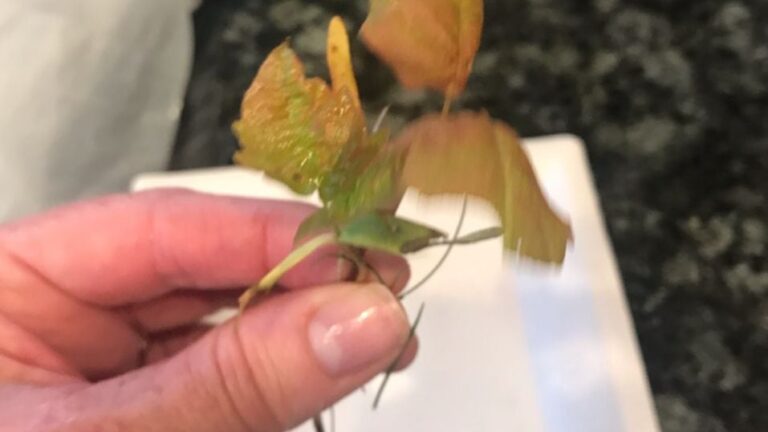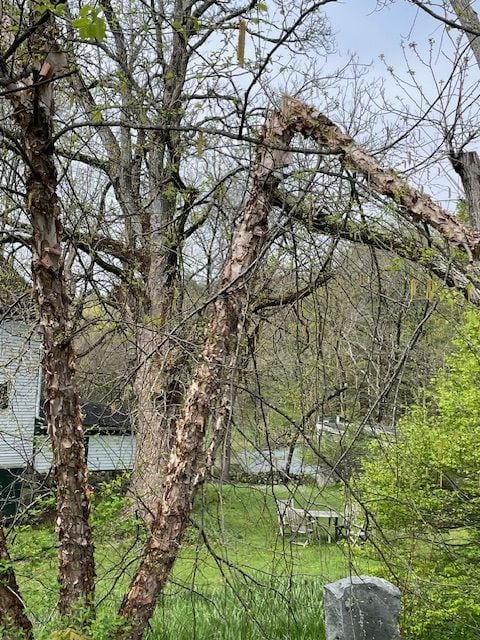Address newsletter
Get the latest news on buying, selling, renting, home design, and more.

The last days of May always bring the peak of spring flowering in this region; the floral effect in a garden is spectacular and unlike any other time of year. Our gardens have fully awakened from their winter dormancy, and we’re now noticing situations that should be addressed before summer’s vigorous growth, when completing them becomes more complicated. Here are some examples:
Q. My husband and I are wondering whether you can identify these crazy things that have taken over our grass and gardens. We have never seen them before and have lived here for 15-plus years! Thank you for your help!
B & D, Plainville
A. These are maple seedlings that have germinated this spring in many of our yards in this region. This unusually prolific phenomenon may be the result of the extraordinarily wet weather we’ve been experiencing since last spring, creating stress on the parent trees, or other factors. The new seedlings are easy to pull up when they are young, and normal mowing will kill those that germinate in lawns. Any left in fertile soil may continue to grow and could become a problem to remove as they mature. You can also try transplanting them now if you want them to grow elsewhere.

Q. The top of one trunk on our river birch clump broke during the winter. Should we cut it at the base, or can the top be saved?
J & A, Carlisle
A. Birch trees are very resilient, and most recover quickly from damage. If you are confident about the height, cut off the broken trunk just below the break, and new growth should re-sprout to form a new leader in two to three years. If that’s too high for you to reach safely, you can cut it at the base as well, but the regrowth will always be shorter than the remaining mature trunks. It is wise to remove the damaged parts soon, not only to improve the appearance of the tree, but also to eliminate the danger a falling branch would pose later.
Q. Recently, I read an article that said shredded bark mulch isn’t all it’s cracked up to be, that it keeps water out as well as in. It recommended bark pieces as alternatives in a garden. What are your thoughts on this, please?
C.R., Peterborough, N.H.
A. Mulching, particularly at this time of year, helps discourage new weeds and reduces moisture loss in the soil — when applied properly. We have many choices for mulch materials, but types like pine needles, fresh leaves, grass clippings, and dry peat moss tend to shed rather than absorb rainfall when first applied. Shredded bark, unless it is unusually “stringy,” is usually a good choice; it captures and allows water to percolate through to the soil. In my gardens, I prefer the more coarsely ground mulches like wood chips and bark nuggets applied 2 to 3 inches deep, and mulching early in the year simplifies weed management later.
I welcome your garden questions, and it’s always helpful if you can include an image that shows what you are inquiring about. Let’s enjoy the spring!
R. Wayne Mezitt is a third-generation nurseryman, a Massachusetts Certified Horticulturist, chairman of Weston Nurseries, and owner of “Hort-Sense,” a horticultural advisory business. In addition to serving as editor-in-chief for the Massachusetts Horticultural Society Leaflet, an electronically published monthly member newsletter, he chairs the Massachusetts Invasive Plant Advisory Group. Please send your questions to [email protected].
Get the latest news on buying, selling, renting, home design, and more.





Stay up to date with everything Boston. Receive the latest news and breaking updates, straight from our newsroom to your inbox.
Conversation
This discussion has ended. Please join elsewhere on Boston.com